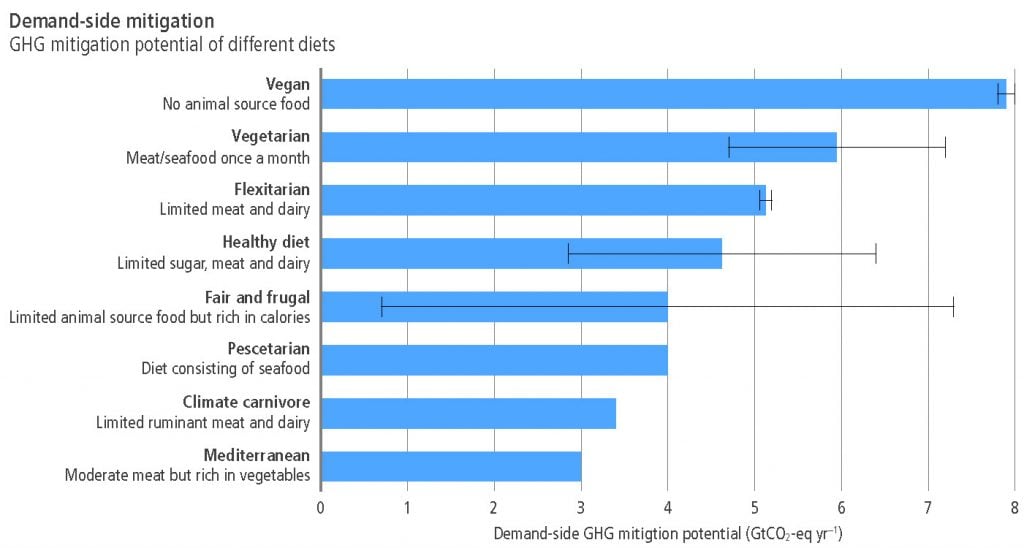
Figure 5.12
Technical mitigation potential of changing diets by 2050 according to a range of scenarios examined in the literature. Estimates indicate technical potential only and include additional effects of carbon sequestration from land-sparing. Data without error bars are from one study only. All diets need to provide a full complement of nutritional quality, including micronutrients (FAO et al. 2018).Vegan: Completely plant-based (Springmann et al. 2016b; Stehfest et al. 2009).Vegetarian: Grains, vegetables, fruits, sugars, oils, eggs and dairy, and generally at most one serving per month of meat or seafood (Springmann et al. 2016b; Tilman and Clark 2014; Stehfest et al. 2009).Flexitarian: 75% of meat and dairy replaced by cereals and pulses; at least 500 g per day fruits and vegetables; at least 100 g per day of plant-based protein sources; modest amounts of animal-based proteins and limited amounts of red meat (one portion per week), refined sugar (less than 5% of total energy), vegetable oils high in saturated fat, and starchy foods with relatively high glycaemic index (Springmann et al. 2018a; Hedenus et al. 2014).Healthy diet: Based on global dietary guidelines for consumption of red meat, sugar, fruits and vegetables, and total energy intake (Springmann et al. 2018a; Bajželj et al. 2014).Fair and frugal: Global daily per-capita calorie intake of 2800 kcal/cap/day (11.7 MJ/cap/day), paired with relatively low level of animal products (Smith et al. 2013).Pescetarian: Vegetarian diet that includes seafood (Tilman and Clark 2014).Climate carnivore: 75% of ruminant meat and dairy replaced by other meat (Hedenus et al. 2014).Mediterranean: Vegetables, fruits, grains, sugars, oils, eggs, dairy, seafood, moderate amounts of poultry, pork, lamb and beef (Tilman and Clark 2014).